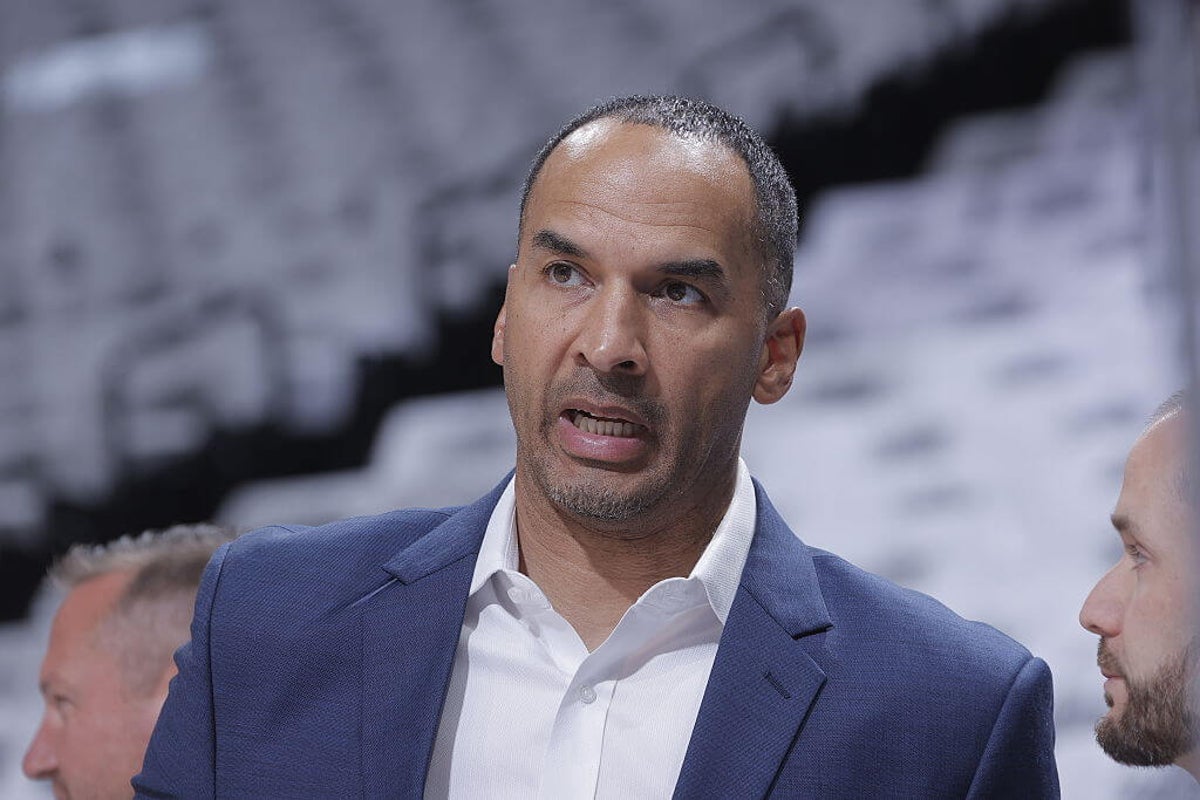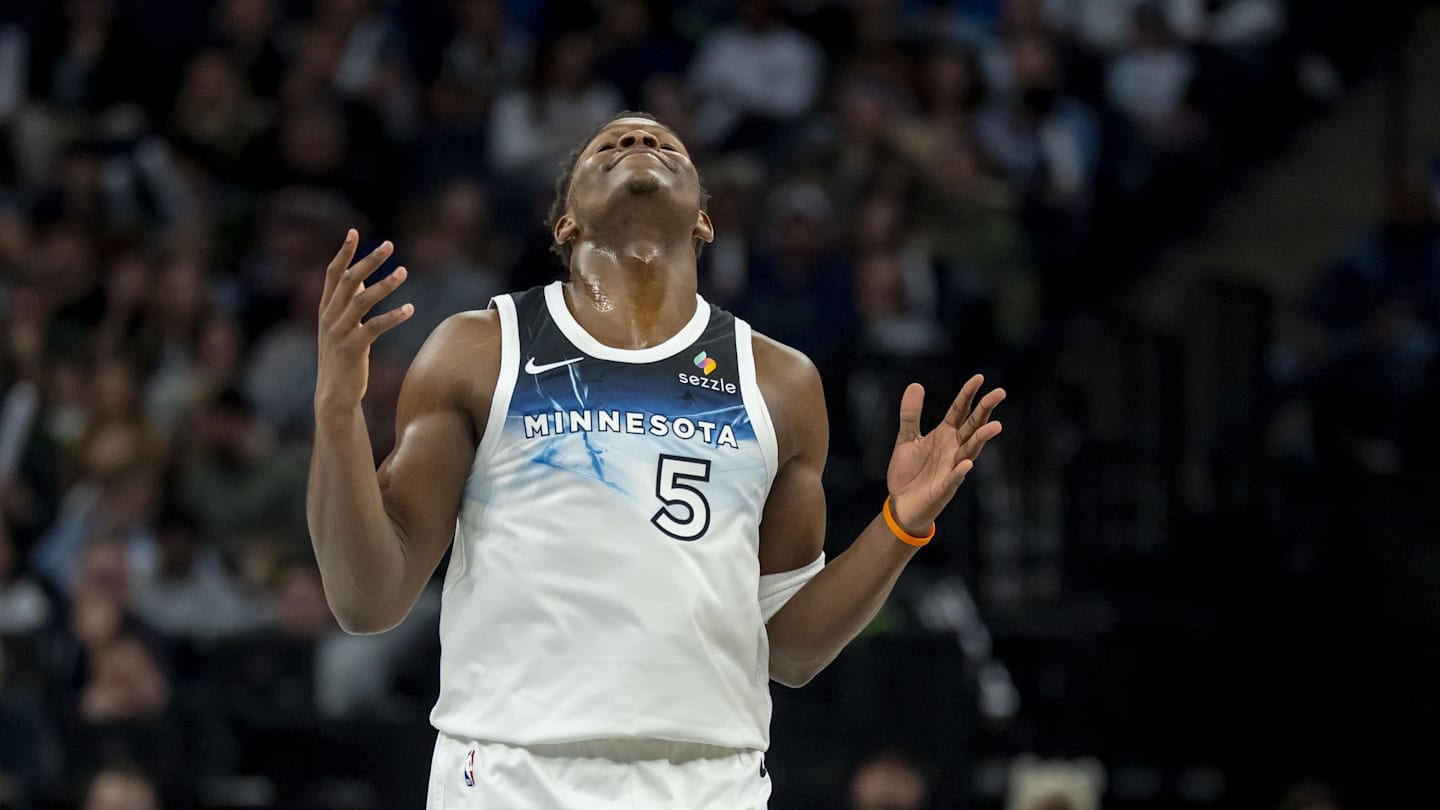
Dallas Mavericks general manager Nico Harrison has come to rely on an old basketball chestnut as a catch-all explainer for why he made the now-infamous Luka Dončić trade.
“Defense wins championships,” Harrison said Monday. “And we’re going to hang our hat on defense.”
It’s a often-used expression around basketball. But is it right anymore?
Advertisement
This week, we explore a few interesting trends across the NBA and go inside the numbers to see what they tell us about where the league is these days. First, let’s start in Dallas.
Over the last 20 NBA seasons, there’s been a slight change in the makeup of championship teams. From 2004-05 through 2014-15, eight of the 11 title teams had a defense that was higher ranked than its offense. Since 2015-16, just two of the eight champs have had a higher-ranked defense than offense, with one team finishing fifth in both categories.
Every title-winning team from 2005-15 had a top-10 defense; the average rank in defensive rating for those teams that season: 4.5. That’s changed slightly over the last decade; the Golden State Warriors won a ring in 2018 with the 11th-best defense, and the Denver Nuggets won two years ago with the No. 15 defense in the league. The average rank in defensive rating for title teams since 2016: 6.6.
That’s happened while having an elite offense has seemingly become more important to winning a title. Out of the last nine champions, only two teams didn’t have a top-five offense (the 2020 Los Angeles Lakers and the 2022 Warriors). From 2005-15, five of 11 champions had a top-five offense, while seven had a top-five defense. Just four of the last nine champions have had a top-five defense. Even if we expand the focus a little bit, the NBA’s final four teams have had a higher-ranked offense, on average, than defense in five of the last seven seasons.
These are all slight differences, of course. There has been no significant change that has completely devalued defense in winning a championship. The three leading title favorites this season — the Oklahoma City Thunder, Boston Celtics and Cleveland Cavaliers — all have top-eight defenses, and the Thunder have the most dominant defense the NBA has seen in a long time.
Advertisement
But the Thunder, Celtics and Cavaliers also own the NBA’s top-three offenses. Only the Kings had a top-12 offense this season and didn’t win at least 48 games. None of the NBA’s 14 worst offenses this season posted a winning record; the Nuggets and Lakers finished with 50 wins and a bottom-14 defense. Last season, every team that finished with a top-17 offense, except for the Atlanta Hawks, won at least 46 games.
The reality is that a team usually needs a great offense and defense to win a championship, not one or the other. Of the last 20 champions, 14 have had top-10 units in both, and another four teams just missed that threshold because their offense or defense ranked 11th. But if a team has to prioritize one, is it easier to build a top-10 defense with a weak-link defender or a top-10 offense with an elite playmaker?
The clear necessity for any title team over the last 20 years has been the presence of a first or second team All-NBA player on the roster. Every champion has had at least one player make one of those teams the season they won a ring — all but six had a first-team All-NBA player.
That’s maybe where another piece of Harrison’s logic erred as well. League executives have said they thought the Mavericks didn’t get enough back for Dončić in the trade. Harrison tried to rebut that opinion Monday, noting again his steadfast belief in Anthony Davis’ greatness.
“If you don’t value AD as an All-NBA player, an All-Defensive player, then you’re not going to like the trade,” he said. “We targeted AD, but if you don’t like him, then there’s nothing else we get that’s going to make you excited about the trade.”
Even if you were a strident Davis believer, and thought that his acquisition was enough to make up for the first-round picks the Mavericks should have — and some league executives say they could have acquired in addition to Davis — the Mavericks center falls short of Dončić in the All-NBA standard. Davis has made an All-NBA first team four times in his 13-year career (but not since 2020) and one second team, while Dončić has made first team All-NBA in each of the last five seasons. Neither one will this year because Davis and Dončić didn’t play in enough games to qualify for the honors.
Advertisement
The trends are also not in Davis’ favor. At 32, he is likely not to be in his prime much longer, which means he will not be the kind of elite player a title team needs. LeBron James is the only player to make an All-NBA First Team after his age-32 season over the last decade.
James and Stephen Curry are the only ones to make an All-NBA First Team in their age-32 seasons over the last decade. James, Curry, James Harden and Marc Gasol are the only ones to do it in their age-30 seasons or older, though Giannis Antetokounmpo is likely to join them this year.
James and Tim Duncan are the only players to make an All-NBA First Team after their age-35 season over the last 20 years. James, Curry, Kobe Bryant, Shaquille O’Neal, Steve Nash and Duncan are the only ones to make an All-NBA First Team in their age-32 seasons or older in that time. Those players, except Nash, are all top-15 players all-time, according to The Athletic. Elvin Hayes is the only player outside The Athletic’s top 30 to ever make an All-NBA First Team at 32 or older.
The list of players to make an All-NBA Second Team in their age-32 seasons or older over the last 20 years is longer — there have been 16 such seasons. That group includes James, Curry, Nash, Duncan, Chris Paul, Kevin Durant, Dirk Nowitzki, Pau Gasol, Jimmy Butler, LaMarcus Aldridge and DeMar DeRozan. Again, it is a list populated with top-30 players. Even then, that likely leaves Davis with, at most, a few more seasons where he will be capable of making one of those All-NBA teams. Dončić turned 26 in February.
Getting farther from the basket
There has been a lot made of the NBA’s shot profile over the years. But aside from the griping from some corners of the basketball ecosystem about too many 3s, it’s more interesting to see how that profile has changed over the last decade.
We know that teams are shooting more 3s, but the Steph Effect isn’t all that’s hit the NBA over the last decade. During the 2014-15 season, 58.9 percent of shots in the NBA were either 3s or at the rim, according to PBP Stats; this season, 69.8 percent were 3s or at the rim.
Just as interesting is just how much deeper NBA players are shooting from. The average NBA 3 was taken a half-foot deeper this season (25.8 feet) than it was during the 2014-15 season (25.3 feet). Meanwhile, 2s are taken closer to the basket, on average, from 8.26 feet away in 2014-15 to 6.27 feet this season.
Advertisement
Jamal Crawford led the NBA with 22 shots from beyond 30 feet in 2014-15; this season 33 players took at least that many 30-plus footers.
Owning the offensive glass
One of the interesting trends over the last few years has been the rise of offensive rebounding. Offensive rebounding rate across the league has slowly crept up since the 2020-21 season. That year, the leaguewide offensive rebounding rate was 22.2 percent; this season it was at 25.2 percent.
The Rockets led the NBA with a 31.7-offensive rebounding percentage, according to Basketball Reference, which is the highest rate in the league in the last decade and highest since the 2011-12 Bulls. Once upon a time that might not have been so unusual — the leaguewide offensive rebounding rate was 30.2 percent for the 1998-99 season but Houston is the first team to cross the 31 percent threshold since the 2015-16 Thunder.
The reason for the reversal in prioritizing offensive rebounding may be an adjustment to how teams have not only found value in it but found a way to minimize their faults, too. When the NBA moved away from the offensive boards a decade ago, it was to get back on defense and give up fewer points in transition. Now, they might think they can do both.
Sixers president Daryl Morey made note of that during his end of season news conference as he assessed what went wrong with his team this season. He stocked his roster with veterans built for the playoffs, which might have underestimated the demands of the regular season.
“I do think the players are still going to be pretty veteran heavy and still a war out there … but the regular season has turned into a really high effort,” Morey said. “Just to call out one area, it used to be that every team was just dropping back after their shot. Now teams are, with length and athleticism, with high effort, both attacking the offensive glass and getting back in transition. It’s just a high-effort regular season.”
Are we seeing a resurgence in heavy minutes workloads?
That seems to be a trend across the NBA in recent seasons. The 2018-19 was a low-water mark for heavy minutes usage. Just nine players averaged at least 35 minutes per game while qualifying for the minutes leaderboard. It was a drastic drop from just five years prior (33), no doubt impacted by how the San Antonio Spurs made sure no player averaged 30 minutes per game during their title season in 2014. By next season, the amount of players averaging 35 minutes per game was halved.
Advertisement
The number started to slowly tick up with the 2019-20 season. In the 2022-23 season, 26 players averaged 35 minutes per game, and the NBA has averaged 24 players per season over the last three years. (For reference, there were 60 players at that threshold during the 2006-07 season).
But there are limits. Five players averaged at least 38 minutes per game during the 2013-14 season. Harden and Butler each reached that barrier once in subsequent years but no one has done it since 2016, and players have topped out in the high 37s over the last three seasons.
Almost gone is the NBA’s 3,000-minute player. Only Mikal Bridges played that many minutes this season, the first time that happened in the NBA since Bradley Beal in 2018-19 and LeBron James the season before that.
Changes and shakeups
It has already been a busy NBA offseason for front offices around the league. Four teams have fired their lead basketball decision-maker (New Orleans, Sacramento, Atlanta and Nuggets), which nearly matches the amount of changes we saw over the last two seasons combined when five teams named new lead executives. League sources had wondered if this would be the offseason in which the unusual front-office stability would break and so far the NBA seems headed that way, with several other franchises worth monitoring. Head coaches, however, have not had the same job security. Sixteen teams have fired their head coach since the start of the 2022-23 season — more than half the league. The Suns have fired three coaches and the Nets have fired two.
A rare draft
The NFL Draft is next Thursday and as of right now, each team owns its first-round pick. That’s a rarity for the NFL, and it’s an extreme compared to the NBA. Right now, two months ahead of the NBA draft, 16 NBA teams don’t control their first-round pick. Heck, four teams don’t control their 2031 first-round pick.
(Photo of Nico Harrison: Rocky Widner / NBAE via Getty Images)


